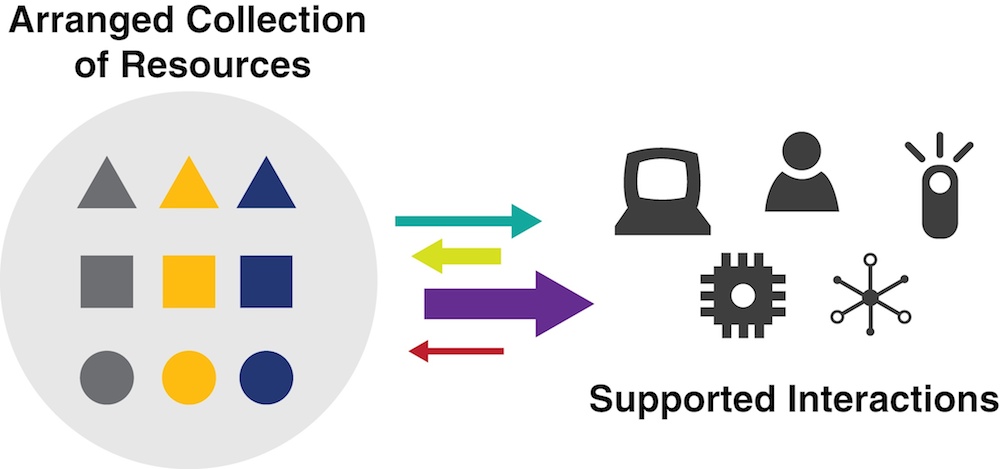1.2. The âOrganizing Systemâ Concept
We propose to unify many perspectives about organizing and information with the concept of an Organizing System, an intentionally arranged collection of resources and the interactions they support. This definition brings together several essential ideas that we will briefly introduce in this chapter and then develop in detail in subsequent chapters.
Figure 1.1 depicts a conceptual model of an Organizing System that shows intentionally arranged resources, interactions (distinguished by different types of arrows), and the human and computational agents interacting with the resources in different contexts.

An Organizing System is a collection of resources arranged in ways that enable people or computational agents to interact with them.
An Organizing System is an abstract characterization of how some collection of resources is described and arranged to enable human or computational agents to interact with the resources. The Organizing System is an architectural and conceptual view that is distinct from the physical arrangement of resources that might embody it, and also distinct from the person, enterprise, or institution that implements and operates it. These distinctions are sometimes hard to maintain in ordinary language; for example, we might describe some set of resource descriptions, organizing principles, ...
Get The Discipline of Organizing: Professional Edition, 3rd Edition now with the O’Reilly learning platform.
O’Reilly members experience books, live events, courses curated by job role, and more from O’Reilly and nearly 200 top publishers.

